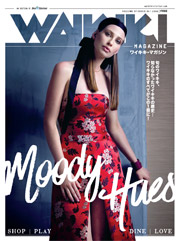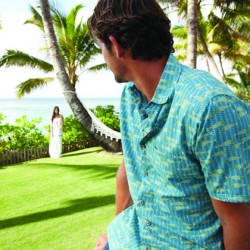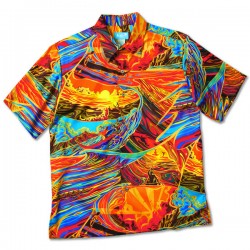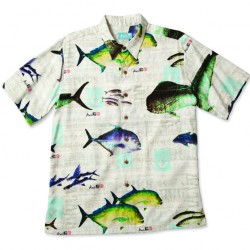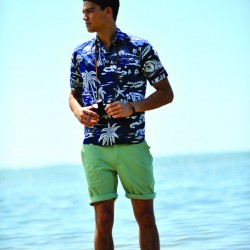Behind the Design
The aloha shirt continues to evolve from its 1930s introduction to the patterns and designs used today.
One of the most visible symbols of Hawai’i’s aloha spirit can be seen in contemporary Hawaiian fashion known as Alohawear.
The aloha shirt that we know today did not come about until the mid-1930s. Shirt-maker Musa-Shiya first used the term in a 1935 advertisement. However, it was tailor Ellery Chun who trademarked “aloha shirt” in 1936 as tourism in Hawai’i grew. After World War II, bolder patterns with tropical images emerged. Rayon shirts called “silkies” became popular from 1945 to 1955. By the late 1970s, designs inspired by the Hawaiian culture came about. Eventually, subdued looking “reverse print” aloha shirts were introduced and are now worn daily in offices and other workplaces throughout Hawai’i.
Today, the shift toward island-style resort wear gives aloha fashion a more cosmopolitan feel. Some aloha shirts may not necessarily feature Hawaiian prints but have various images arranged in a similar pattern as a traditional aloha shirt.
“Prints are very directional and personal,” says Alice Chen, design director of Reyn Spooner. “Each print says something unique to each person. Prints represent a much-needed break from the classic, safe, plain and monochromatic fabrics that tend to characterize a man’s wardrobe. It’s an extension of one’s personality, like stories we tell to define ourselves.”
According to Chen, Reyn Spooner has a long history of collaborating with local artists. Its current collections feature work by contemporary Hawai’i-based artists Dietrich Varez, Eddy Y, and Naoki. Reyn Spooner also uses prints from the Alfred Shaheen archives. This is the newest chapter in a working relationship between Reyn Spooner and Alfred Shaheen that dates back to the 1960s.
- Kai Clothing
- Reyn Spooner
Reyn Spooner’s fall collection prints have a French vintage feel mixed with a bit of art deco. “The implementation of color is based on rich and warm tones,” says Chen. “It’s well-balanced and playful. This season has plenty to offer in terms of prints.”
At Tori Richard, “Prints are the DNA of our brand,” says Amy Renshaw, art coordinator. “We create approximately 500 different print designs per year. In fashion, prints can evoke anything: excitement, relaxation, sophistication, leisure, whimsy, boldness… an endless spectrum!”
According to Renshaw, the process to decide which prints are used at Tori Richard involves president Josh Feldman, as well as merchandisers and designers. “We create designs which reflect travel and adventure or we are inspired by the cross current of cultures that exist here in Hawai’i,” says Renshaw. “As a result, our designs reflect many different themes—tropical and non-tropical flowers, foliage, paisleys, Asian motifs, small geometrics … but the final product is always appropriate for destinations worldwide, from Hawai’i, to Miami or the Caribbean, to the south of France. While we pay attention to what’s trending in fashion, more often than not we set our own trends. A key feature of our textile art is that the prints can be worn anywhere on the globe.”
Kai Clothing is another clothing brand where prints have a lot of meaning on their men’s and women’s apparel. Kai means ‘ocean’ in Hawaiian, and its prints are inspired by oceans around the world.



